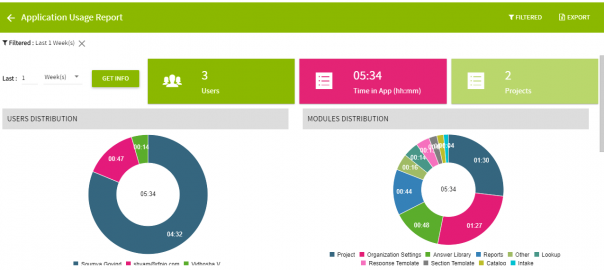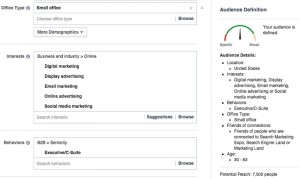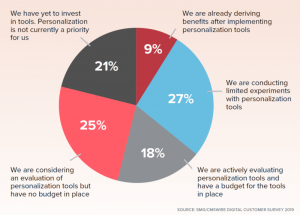When I first started responding to RFPs, few people were paying attention to RFP metrics. Sure, there were definitely some trailblazers who were measuring performance, analyzing wins and losses, and optimizing efficiency… but I certainly wasn’t one of them. For me, responding to RFPs was less of a process than a mad scramble to the deadline.
Since then, my approach to RFP response has evolved. Admittedly, this is likely aided by co-founding a company that streamlines the response process via automation and analytics. This article will focus on the latter.
If you do it right, data-driven management can help sales teams sell smarter. But it can also provide insights into how proposal teams can identify—then either avoid or plan around—process challenges, such as resource management challenges, reduced ROI, missing deadlines, and inefficient content development.
By the end of this article, you will understand which RFP metrics you should be tracking—and how to use these metrics to minimize risk and enhance efficiency.
RFP metrics overview
Responding to RFPs can be an expensive undertaking. When you’re working with limited time and resources, you need to be strategic about which projects you take on. Improving your odds of a win starts by determining whether you’re a good fit, and identifying risk factors early so you can avoid surprises and plan for success.
Don’t let dollar signs, commas, and zeros distract you from what’s possible. Go for that big deal, but don’t do it just because of the logo or the dollar value. Do it because the data tells you, “You have a great shot at winning!”
For answers about your future, look to the past. Use data from past wins, losses, and incompletes to determine whether a project is worth pursuing. When you capture an RFx and upload it as a new project to RFPIO, the system will evaluate past projects for comparison and provide a dashboard that gives you an idea of what to expect.
Here’s a small taste of some of the data points that will help you enhance efficiency and gain new insights throughout your response process:
Project Type: Segment your RFP data according to project type. If you respond to RFPs, Security Questionnaires, and DDQs, then you can set each of those as a project type so you’ll be able to compare apples to apples. You can also segment based on industry, size, geo, and more.
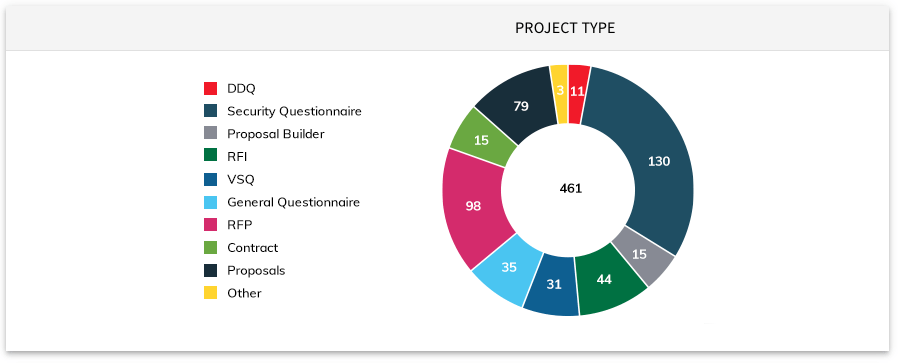 Focus on Wins: How many similar past projects have you won? Lost? Understanding what kinds of projects have been submitted and won helps you focus your efforts only on projects you’re most likely to win moving forward.
Focus on Wins: How many similar past projects have you won? Lost? Understanding what kinds of projects have been submitted and won helps you focus your efforts only on projects you’re most likely to win moving forward.
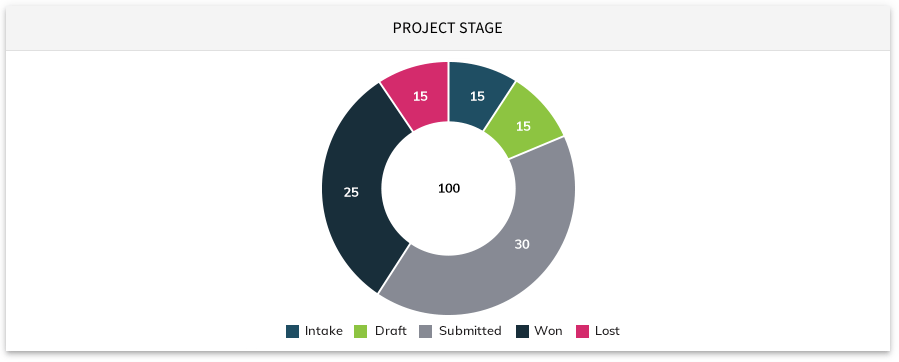 Project Scope: Identity total volume of work required to complete the project.
Project Scope: Identity total volume of work required to complete the project.

Time to Completion: See the shortest, longest, and average times for similar past projects. In a recent survey, we found that 57% of proposal managers said their primary goal is to improve the proposal management process to save time.
 Resource Needs: Examine content that may need to be created or moderated. Identify primary authors and moderators from past projects.
Resource Needs: Examine content that may need to be created or moderated. Identify primary authors and moderators from past projects.
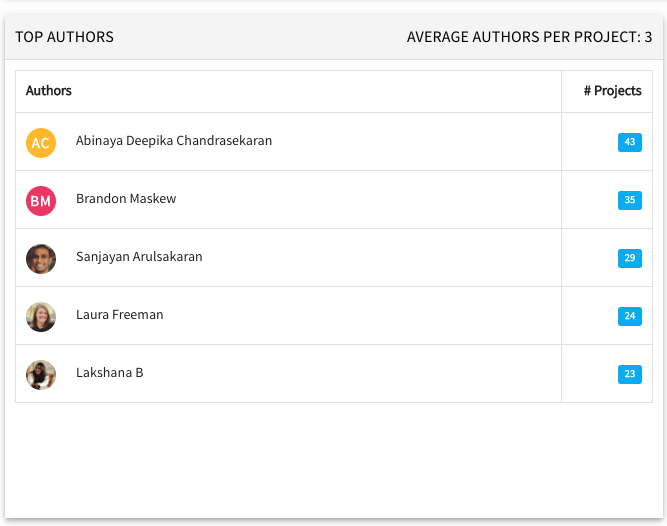
Content Needed: Understand what kinds of questions are being asked, and whether you have that information on hand.
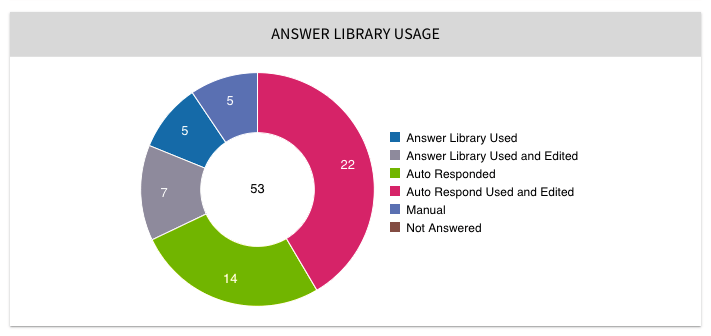
Taken in isolation, each of those data points means very little. Homing in on a single datapoint is just like trying to ride a bike with just the wheels—you can’t get anywhere without the pedal, seat, and handlebar.
Instead, it’s best to approach RFP metrics in context of the greater RFP response process. The trick is learning how to apply insights from each individual data point in a way that enhances efficiency and reduces risk.
To make this easier on you, this blog breaks down the RFP metrics you should be paying attention to according to how they fit into the RFP response process:
- RFP metrics to inform bid/no-bid decisions
- RFP metrics for planning, implementation, and finalization
- RFP metrics for ongoing optimization
By the time you finish reading, you’ll understand which RFP metrics you should be tracking and how to track them.
RFP metrics to inform bid/no-bid decisions
The first step of the RFP response process is figuring out whether an RFP is a good fit. Is this RFP worth the time and resources it’s going to take to complete?
In making your fit analysis, you need to be selective. You don’t want to waste time and resources on an RFP you’re probably not going to win. But you also don’t want to walk away from a potential opportunity, and leave money on the table.
RFP metric #1: Determining whether you’re a fit
While this isn’t *technically* a metric, decomposing the RFP to determine whether you’re a fit is extremely important to the bid/no-bid decision making process, and worth mentioning here.
Before you spend anytime answering a single question, the first thing you’re going to want to do is determine whether your solution is in line with the key requirements. Do a quick scan to see if anything pops out at you.
What problem is the issuer looking to solve? What are the features and functionalities on their “must-have” and “should-have” list?
This is also a great way to determine whether you’re dealing with a wired RFP, where an incumbent exists and the issuer is just going through the motions. If there are a considerable number of requirements that seem irrelevant or very far off base, that’s a good sign the issuer isn’t interested and the RFP might not be a good use of your time.
If your solution isn’t in-line with the issuer’s needs… go ahead and throw it on the “thanks, but no thanks” pile.
Remember: Your time is valuable. Don’t spend it on proposals you’re not likely to win.
Even if you are a good fit, you may still decide it’s a no-go due to other priorities, deadlines, and resource commitments.
If you do find you’re regularly passing up potential opportunities due to bandwidth, you might consider a proposal automation solution. According to a recent survey, organizations using RFP-specific technology submit nearly 50% more RFPs than those who don’t.
RFP metric #2: Do your homework on the RFP issuer
Yes, okay, we’re two for two for metrics that aren’t technically metrics. But you’re going to want to do a background check on the RFP issuer before you do a single iota of work. Nothing is worse than putting the final touches on an RFP, only to discover you already submitted a near-identical RFP two years ago.
Once you’ve determined the decomposition of data is a fit, there are a few questions you’ll need to answer:
- Has this company previously issued RFPs?
- If yes, did you win? Were you short-listed?
If you did submit an RFP for this particular company before—and you lost—it might not be worth your time. But if you were short-listed, and the company ended up going with another vendor, it could indicate that they weren’t happy with the other vendor’s solution… and this might be your chance to shine.
If you have submitted an RFP for this particular company before, pull that old RFP from the archives, and examine it with a critical eye. What did you do well? What can be improved? You don’t always get a second chance to demonstrate your competitive advantage—don’t let this opportunity slip you by.
RFP metric #3: Analyzing past wins based on company profiles
Compare company size, project value, and vertical to your typical customer profile. If you usually work with enterprise companies, and the RFP you’ve just received is from a startup, your solution might not be a good fit.
Save yourself some time in the future by tracking these data points as you go along. Each time you receive a new RFP, make a note of the parameters you want to track. As a starting point, I would suggest tracking*:
- Vertical
- Company Size
- Product Line
- Project Type*
- Project Stage*
- Number of Questions*
- Project Value*
*RFPIO tracks project type, stage, number of questions, and project value by default. You can track vertical, company size, and product link by creating a custom field.
Be diligent about tracking each parameter whenever you receive a new RFP. Over time, you’ll see how well you perform for each of your chosen parameters.
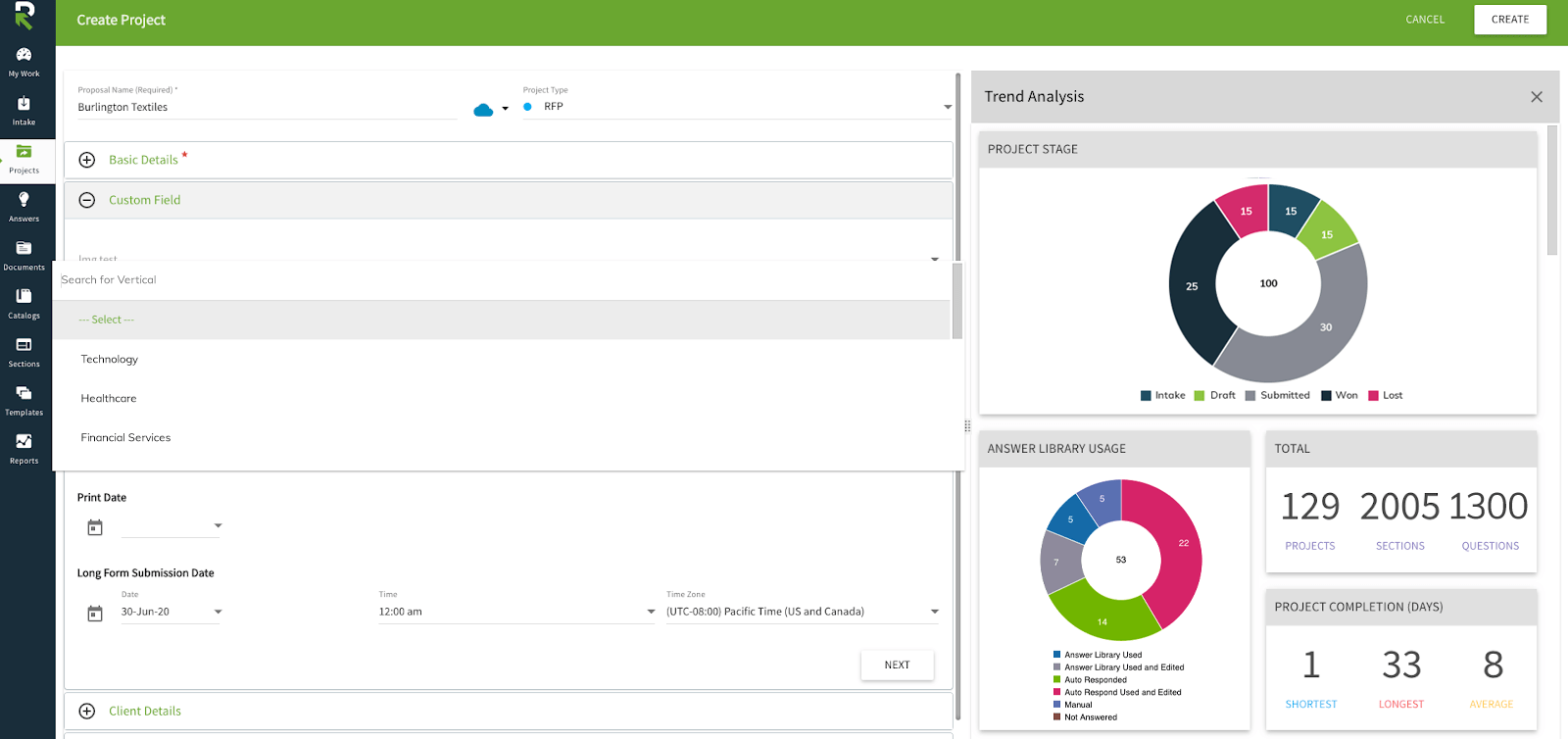
RFP Metric #4: Tracking your average RFP response rate
Your average RFP response rate is a function of the number of outgoing RFPs divided by the number of incoming RFPs.
Average RFP Response Rate = # Outgoing RFPs / # Incoming RFPs
There is no rule of thumb for what your average RFP response rate should be. For some companies, an 80% response rate is too low; for others, a 30% response rate is too high.
One thing that can be said for certain is that if every RFP that comes in is being responded to, something is off. It means you’re not qualifying what’s coming in. By going after everything, you end up wasting time and effort on deals you’re probably not going to win.
You can adjust your average RFP response rate as you go along. If your win rate is astronomical, it could be a sign that you want to start responding to more RFPs (and vice versa).
On the flip side, if you’re responding to 50% of RFPs, and your win rate is abysmal, it could be a sign you need to better qualify the deals you’re going after.
RFP metrics for planning, implementation, and finalization
Once you’ve decided this RFP is a go, it’s time to get to work. That means building out your team, keeping your project on track, and submitting a polished final product.
RFP Metric #5: Determining Workload
Before you do anything, check the project size (i.e. number of questions) and the due date. This will give you a general idea of how much work you’ll have to do based on past performance.
After that, you can start assigning work out to your team. As you’re choosing SMEs, the most important metric to track is current assigned workload. If one of your SMEs has four projects due by the end of next week and you’re adding another one, you’re just asking for trouble. That’s the time you proactively find an alternate SME.
If you’re using RFPIO, you can check current SME workload right in the application. The system will tell you how much work is assigned to which SMEs, what the workload looks like, and if there is any overload.
If you’re not using proposal management software, you can also keep track of SME workload using spreadsheets; you’ll just have to make time to keep your spreadsheet up to date.
RFP Metric #6: Readability Score
If a proposal is difficult to understand, it increases the cost for bidders during the procurement process. Confusion leads to delays. Delays drive up costs. And everyone loses.
Most people read at a 10th grade level. Make life easy for your buyers by writing at that same level. Avoid delays by calculating readability as content is being added, using an editing tool like the Hemingway App or the Fleisch reading ease test.
RFP Metric #7: Probability of Win Score (PWIN)
Here’s where you take an honest look at your work so far and ask yourself: How can I increase my odds of winning?
A PWIN (Probably of Win) score is calculated based on the answers to a variety of questions designed to best determine how well the company’s team, experience, and contacts match those required for the opportunity. The higher the score, the better chances of winning the contract will be.
Ask questions like:
- How does the language compare to previous projects? Is it accurate, positive? Does it align with winning RFPs from the past?
- Have you answered all the questions? Have you met all the required conditions?
- How often do you answer in the affirmative vs. negative?
Be honest with yourself. Have you said “no” to a certain percentage of must-have or should-have requirements? Are you qualifying too much, or agreeing to build too many features? It might not be worth the final proofing and polishing to primp your proposal to perfection.
Just because you’ve spent a lot of time getting your proposal this far, it doesn’t mean you need to spend even more time getting it over the finish line. Your time is valuable. It’s okay to throw in the towel.
Regardless of whether you decide to submit the proposal, make note of the requirements you’re missing, and coordinate with your product management team to get them into the roadmap.
RFP metrics for improving win rate and optimizing efficiency
You should constantly be looking for opportunities to optimize efficiency and improve win rate. Tracking metrics and analyzing the data can help you do that.
RFP Metric #8: Identify Content Gaps
Auditing your Answer Library is an art unto itself. From an RFP metrics perspective, RFPIO includes an insights tool that helps you identify content gaps, content that needs to be updated, and content that needs to be created.
What terms are being used in search? What’s being found? What’s not being found? Let’s say a security product company is seeing a lot of requests for “zero trust” but no content exists because it’s new terminology that has quickly become industry norm.
The insight tool alerts content owners that content needs to include “zero trust” in order to stay relevant—and could provide insight to leadership and product teams on where the market is headed.
Sometimes you just need new content in your library. For example, if a lot of people are looking for information about “outages” (i.e., what has been your longest outage?), but turning up empty-handed, it might be a good idea to reach out to your product team to let them know new content is needed.
RFP metric #9: Determine content library health
To determine how healthy your content library is, see what percentage of RFPs can be completed with auto-respond, as opposed to manually creating answers from scratch. With a well-curated Answer Library, 40-80% auto-response is realistic. 30-40% of content exists but needs editing. 20-30% needs to be brand new.
If your auto-respond is hovering below 40-50%, that’s a good sign you’re in need of a content audit. If this sounds like you, check out our guide on how to conduct a content audit in 3 steps.
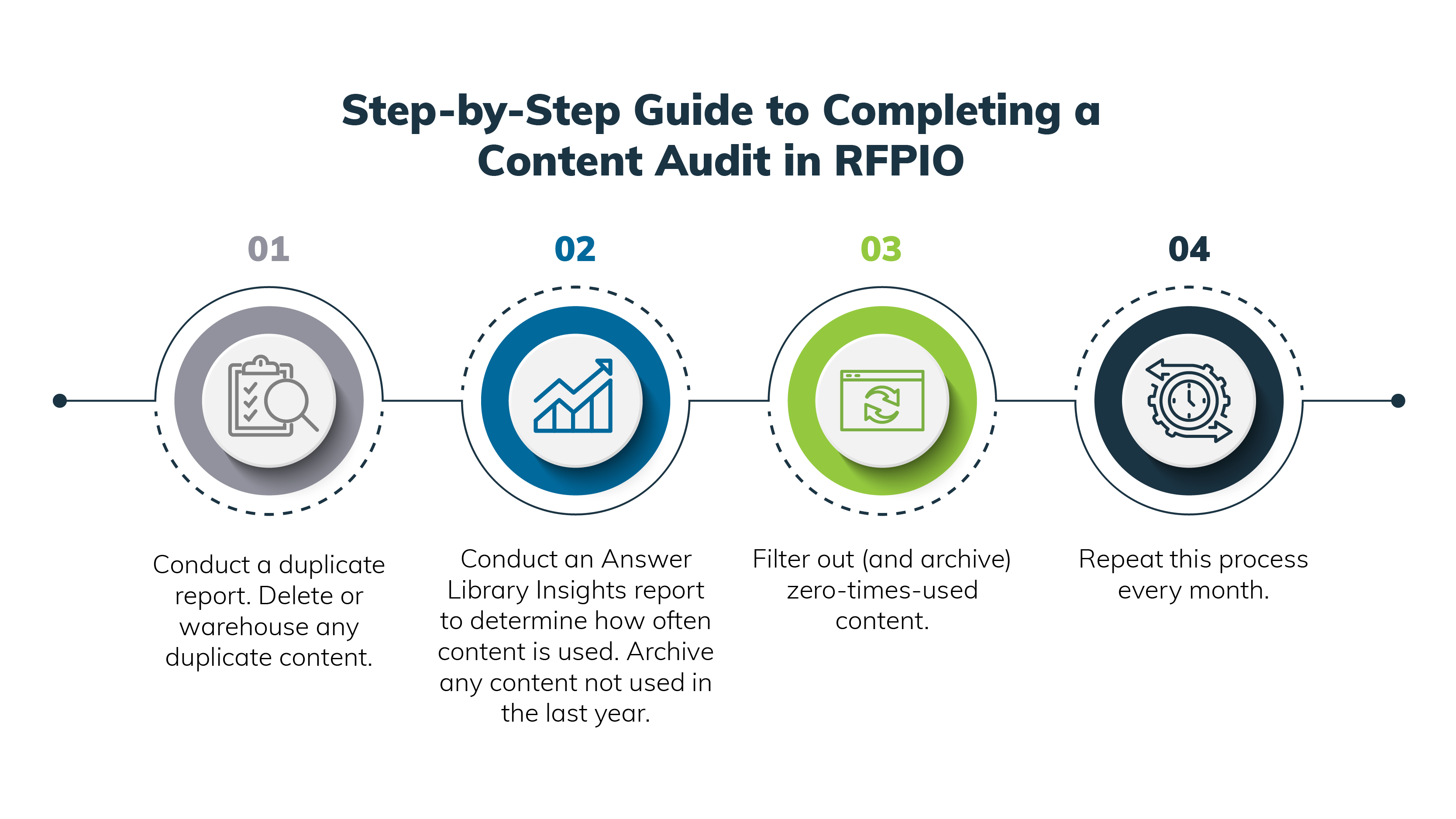
Future impact
There’s more to discover after delivering a project. Before you even know if you won or lost, you can start mitigating future risk based on what you learned during this project.
How long did it take (longer/shorter than average)? How many deadlines were missed? How much content was re-used? How much content was missing? Set up a feedback mechanism to share these findings with content owners and SMEs so you can continue to improve knowledge management and the response process.
Time matters
Our success metric is not to have users spend more time in our platform. This is not social media. We want users to be able to work responses faster and more effectively than they’ve ever thought possible. Which brings me to the last RFP metric I want to mention here: how well you’re using your team’s time.
Generate an Application Usage Report to gain insight into which modules (Project, Answer Library, etc.) your users spent their time. Compare that time spent against past similar projects. Did you save the team time? Did it take longer than average? From here, you can dig into why and start minimizing risk for the next proposal.
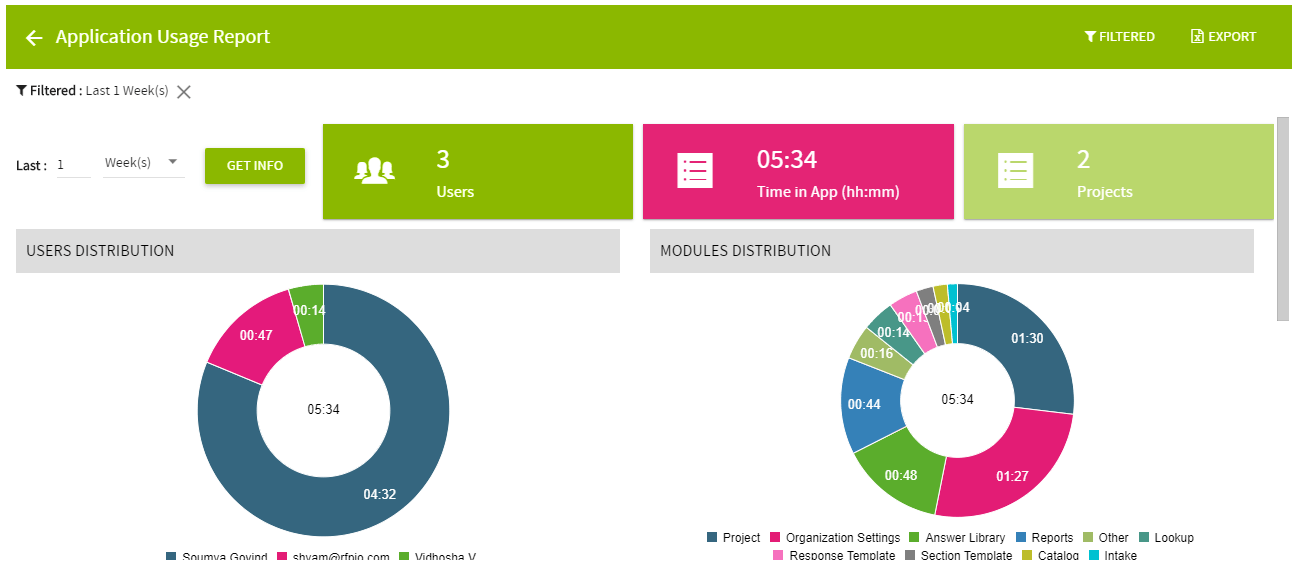
Business & Finance Articles on Business 2 Community
(79)
Report Post